Annie Novak, Urban Farmer and Bird Champion, Joins ABC Board
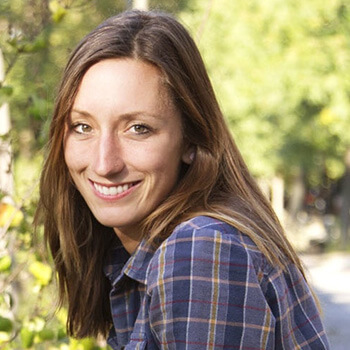
We're pleased to welcome Annie Novak to the ABC Board of Directors!
Based in New York City, Annie is an urban birder, writer, and activist. She is the founder and director of Growing Chefs, a field-to-fork food education program; the Manager of the Edible Academy at the New York Botanical Garden; and co-founder and farmer of the nation's first commercial green roof farm, the Eagle Street Rooftop Farm in Brooklyn, New York.
Annie is also the author of The Rooftop Growing Guide: How to Transform Your Roof into a Garden or Farm (Ten Speed Press). For her efforts to green the city landscape, Annie was recognized by the Audubon Society's Women in Conservation Program. She also writes, illustrates, and lectures on the history and technology used to study nocturnal bird migration over the changing North American landscape.
As impressive as all of this is, there's even more to know about Annie Novak, and we're thrilled to have her on our Board. Read on to find out what we learned when we spoke with her recently.
Favorite bird:
I've met less than 5 percent of the world's bird species so far. It's hard to choose a favorite knowing that so many more are out there.
Place you'd most like to go birding:
Because I love migration, Eilat, Israel is on the wish list. But I've never been disappointed. Birds are everywhere, and always up to something interesting — especially at home in New York. Someone recently spotted a Cattle Egret in a Brooklyn cemetery and an escaped Red-cheeked Cordon-bleu [a bird native to Africa] on the Hudson River bike path in Manhattan!
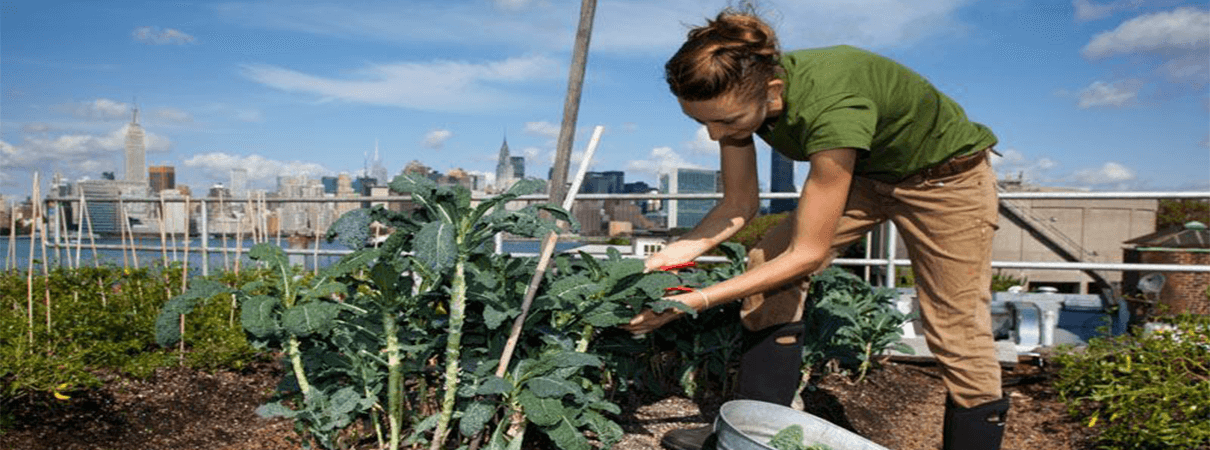
Annie Novak working on a rooftop farm in New York City. Photo by Jackie Snow
What fascinates you most about birds?
Migration, in every aspect: from zugunruhe (German for "migratory restlessness") to meeting the challenges of navigating and homemaking across a series of landscapes. Our understanding of bird migration is evolving so rapidly. The sky above us is teeming with life, from birds to insects.
This is how exciting undersea exploration must have been around the turn of the 20th century and into the 1950s. People once considered the oceans to be cold, empty, and colorless places. Underwater color photography and deep-dive equipment changed all that. It feels like we are in similar place with aeroecology. Gaining a better understanding of where birds go when they migrate is a powerful tool for targeting conservation efforts. The technology we have access to is the best it has ever been, while many species of birds are disappearing more rapidly than ever before.
Also, a bird's ability to fly is remarkable. We use the phrase “bird's-eye view” so casually it belies how truly incredible living life with that view must be. Watching birds take off from standing (or paddling in water!) into powered flight completely blows my mind.
What bird question or concern would you like to see addressed the most?
There are many questions and concerns for birds, but one issue close to me is the conversation around artificial light at night. Over three-quarters of the world's human population and all but 1 percent of Europeans and North Americans sleep under the luminous fog of artificial light. In New York City, where I live, night lighting is inefficiently used, improperly shielded, overly bright, and often unnecessary. If photos were water, we'd turn off the tap.
What the loss of our view of the stars will mean for human health and culture is still unfolding, but it is increasingly obvious the detriment it causes to the nightlife, sex life, and migratory journeys of amphibians, fish, insects, and especially birds.
Bird-safe glass is a must, too. Building collisions claim an estimated 90,000 birds a year in New York City. One study estimated up to a billion birds die each year in the United States due to collisions with glass. I'm a volunteer with New York City Audubon's citizen science program cataloging window strikes during migration season. It is devastating to see First-of -the-Year birds concussed on the sidewalk next to a big glass picture window – particularly because it's such an straightforward problem to remedy! ABC's leadership on bird-smart building recommendations is a gold standard. I would love to see those principles universally adopted.
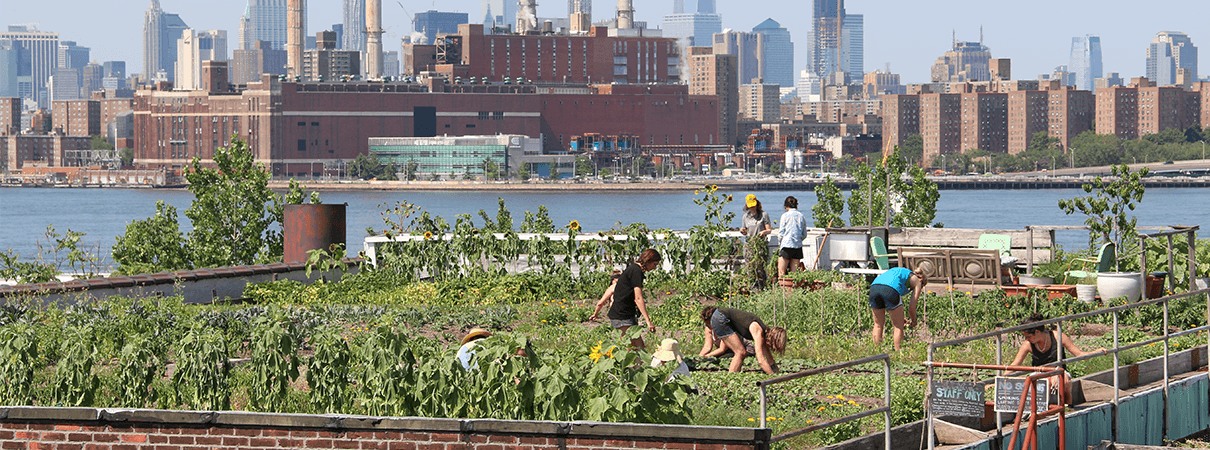
Eagle Street Rooftop Farm. Photo by Annie Novak
What other hobbies do you have?
Well, birding was my hobby until I started to take it so darn seriously!
I'm a long distance runner. I just started my own 100 Miles for Migration run, a series of ten-mile runs for the duration of fall migration highlighting great places to go birdwatching. There are a few marathons along the way, too — my favorite mileage. I just started running 50 mile races, too. It reinforces my respect for migratory animals to push myself at that distance.
While sitting still, I love reading and drawing comic books and graphic novels. I grew up reading Tintin, and illustrated my first book (The Rooftop Growing Guide, Ten Speed Press) based on Herge's color palate. Now I'm working on an illustrated nonfiction book about nocturnal bird migration.
What's your day job?
I've worked for the New York Botanical Garden since 2005. I started as an intern and now manage a site called the Edible Academy, a three-acre vegetable garden and LEED-certified classroom complex dedicated to children and family education. Additionally, when I graduated college, I founded a nonprofit called Growing Chefs that teaches math and science through garden-based food education in schools. I also co-founded and continue to farm the first commercial green roof farm in the country, the Eagle Street Rooftop Farm. That work has led me to all sorts of adventures, from writing a book (and many articles!) to traveling quite a bit, learning about farms, farmers, and the ecosystems they work within.
What are you most excited about now that you're an ABC Board member?
The staff and Board members at ABC are remarkable people: passionate, creative, and mission-driven. There are few organizations that self-describe as “fearless” and “bold,” and that is certainly the vocabulary needed to address the issues facing birds in today's climate. It's a bittersweet time to fall in love with birds. I'm thrilled to support and participate in the ABC community.
What inspired you to get involved with ABC?
I started birding about ten years ago, exploring urban parks and green spaces while on long runs with a light, cheap pair of binoculars. In 2010, ABC released "The American Bird Conservancy Guide to Bird Conservation." I was invited to the New York City launch event by longtime ABC Board Member Jonathan Franzen. Jon is a notoriously passionate birder, and I was happy to learn more about ABC from someone whose voice and opinion I trusted from years of reading his work on bird conservation.
I read the book cover to cover that week. It was eye-opening. Reading about birds in decline as a way of first meeting many species was devastating. But I kept thinking back to the book launch, and how many powerful conversations came from that evening. If an organization could be realistic, targeted, and strategic about the threats facing birds while creating positive, partnership-driven, and action-oriented resolutions toward mitigating them — well, I wanted to be part of it.
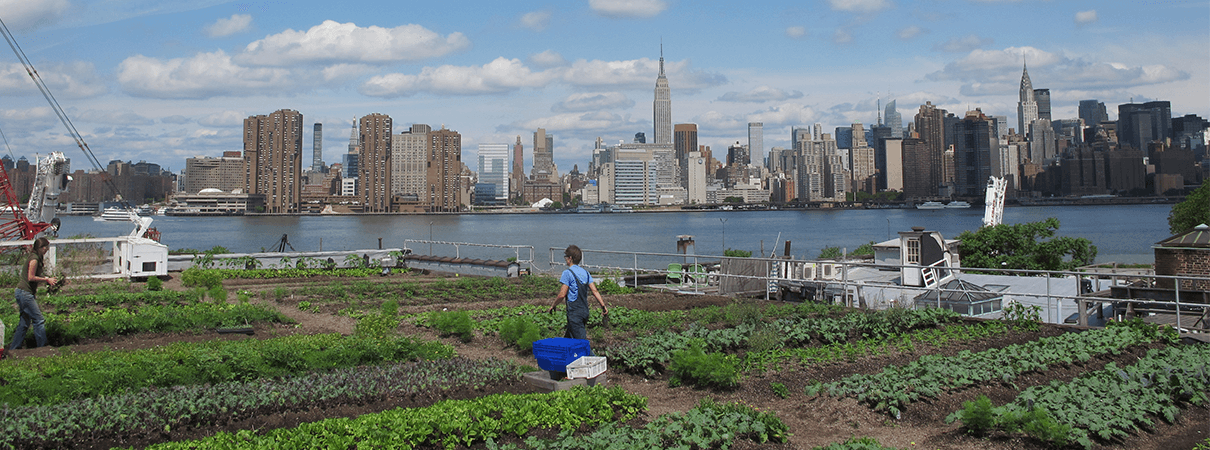
Eagle Street Rooftop Farm. Photo by Annie Novak.
What will you bring to the ABC Board that makes you stand out?
I channeled my love of vegetables into an international movement for green roofs. There was nothing new about agriculture, per se — but we put it in an unusual place (on a roof!) and invited people up and into the conversation.
I believe that birding, as a rapidly rising hobby, has the same potential. I'm particularly excited about the growing community of young urban birders. They — we — really bring their personal politics into the field with them. National Audubon did market research that identified 9 million people between the ages of 18 and 35 who link their interest in birds to environmental activism. Issues such as the conservation of open spaces, mitigating light pollution, building economic and social justice, and growing toward sustainable agriculture can all be viewed through the utterly delightful lens of learning about the colorful, fascinating lives of animals that easily capture your heart: birds.
If you could tell folks one thing about ABC what would it be?
Get involved! A large number of ABC's initiatives rely on your participation, whether it's bird-proofing your glass windows, pledging to keep your cat indoors, or joining ABC in standing up for the Endangered Species Act.
This is the time to jump in, not watch from shore. Even signing up for the email list and getting “Bird of the Week," weekly bird profiles, just to gain a greater appreciation for the broad reach of the work ABC does. I'll never forget the Friday morning the Araripe Manakin appeared in my inbox. Swoon.
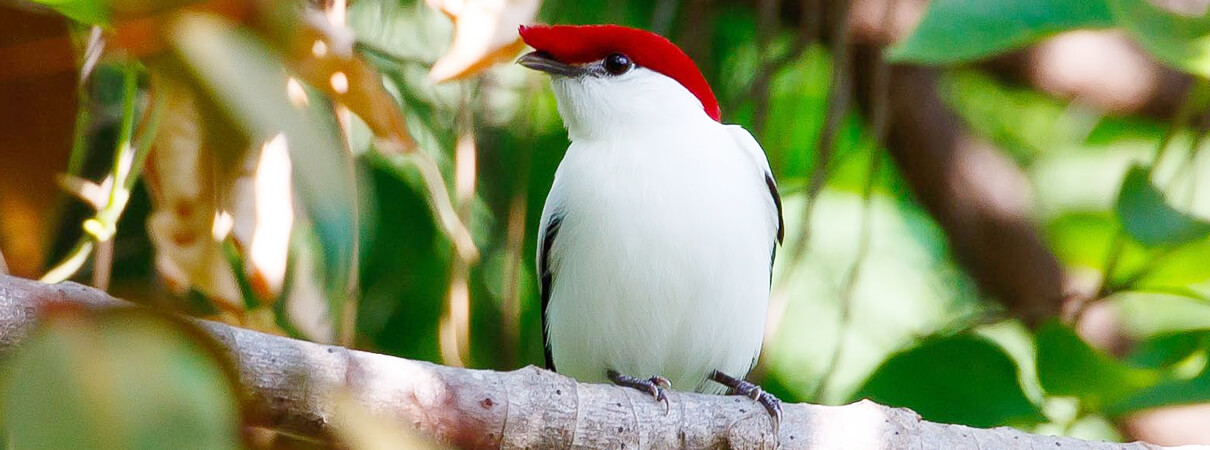
Araripe Manakin, Photo by Maggie Forrester


















































